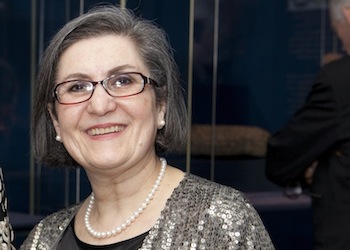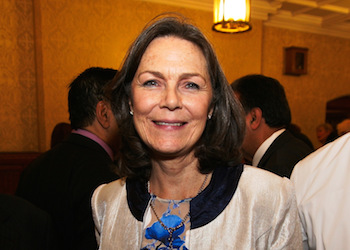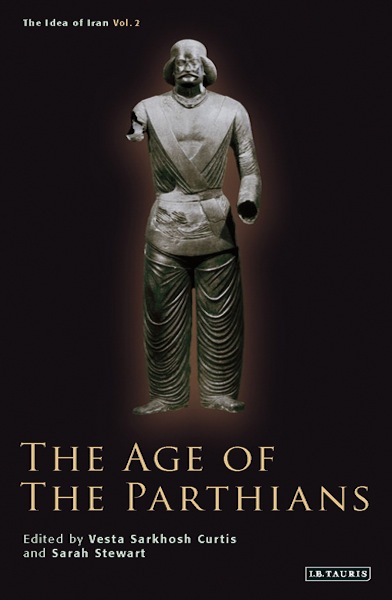The Age of the Parthians
he Parthian civilization was a dominant feature of the ancient near East for some five centuries, and yet relatively little is known about it today. But it is established that in the mid-third century BCE, a bold and ambitious leader called Arsaces challenged Hellenic rule and led his armies to victory. The dynasty which he founded ruled over what became a mighty empire and restored the glory of Iran following the region’s conquest by Alexander the Great. This imperial eastern superpower, which lasted for 400 years and stretched from the Hindu Kush to Mesopotamia, withstood the might of Rome for centuries. The Parthian were nomadic horse-warriors who left few written records, concentrating rather on a rich oral and storytelling tradition. What knowledge we do have of these remarkable people derives primarily from their coinage and classical sources.
In this book, distinguished scholars examine – from a variety of perspectives – the origins of the Parthians or Arsacids, their history, religion, art and culture, as well as perceptions of their empire through the lens of both imperial Rome and China. Vesta Sarkhosh Curtis discusses the legacy of Parthian art and coins and how these emerged from an amalgamation of Near Eastern, Iranian and Hellenistic motifs. David Bivar writes about the greatest of the Indo-Parthian kings, Gondophares, who reigned from CE 19 – 45, and is celebrated for his encounter with the Christian apostle Thomas. Josef Wiesehöfer examines the dark ages of Persis (Fars) at the beginning of the third and second centuries BCE, when it was governed b a local Persian dynasty, and assesses the relationship that it had with its overlords. Rolf Schneider views the Roman imagery of the Parthians as a crucial medium representing core western ideas about the cultures of the east. He suggests that this occidental preoccupation with the Orient was a precursor to modern orientalism. Wang Tao examines traditional Chinese records of the Parthians that were written while both empires exchanged envoys and ambassadors, and were jointly responsible for the opening of the Silk Road. He highlights the significance o the cultural history of ancient Iran gained through the Chinese accounts. In the final chapter of the volume Oktor Skjærvø discusses various aspects of the ancient Zoroastrian religious text of the Videvdad, including the cosmological myth of creation, and the final renewal of the world after the expulsion of the forces of darkness.
Editors

Dr Vesta Sarkhosh Curtis is Curator of Middle Eastern Coins at the British Museum and is responsible for its collection of pre-Islamic Iranian coins (from the third-century BC until the middle of the seventh-century AD), which includes both Parthian and Sasanian coins. She also looks after coins of the Islamic world beginning with the Umayyad and Abbasid periods and including coins of the Samanid and Buyid, Seljuk, Mamluk, Ayyubid and Fatimid, Ilkhanid and Timurid, Safavid and Qajar dynasties. Projected have included The Sasanian Coin Project, a collaborative project with the National Museum of Iran in Tehran, and now successfully completed. The result is a two-volume Sylloge of Sasanian coins of the third- to seventh-centuries AD while Dr Sarkhosh Curtis currently jointly-directs the International Parthian Coin Project, The Sylloge Nummorum Parthicorum (SNP), and is Joint Editor of the SNP series. This multi-institutional project will record Parthian coins of the third-century BC to the third-century AD found in London, Vienna, Tehran, Paris, Berlin, and the American Numismatic Society, New York.

Dr Sarah Stewart is Lecturer in Zoroastrianism in the Department of the Study of Religions at the School of Oriental and African Studies, University of London and Deputy Director of the London Middle East Institute, also at SOAS. She has been co-convenor of the ‘Idea of Iran’ symposia since its inception in 2006 and has co-edited five volumes in the ‘Idea of Iran’ publication series with I.B.Tauris. She serves on the Academic Council of the Iran Heritage Foundation and has been a longstanding Fellow of the British Institute of Persian Studies, most recently serving as its Honorary Secretary until 2013, in which year Dr Stewart co-organised the acclaimed exhibition: ‘The Everlasting Flame: Zoroastrianism in History and Imagination’. Her publications include studies on Parsi and Iranian-Zoroastrian living traditions and is currently working on a publication (in collaboration with Mandana Moavenat) on contemporary Zoroastrianism in Iran.


